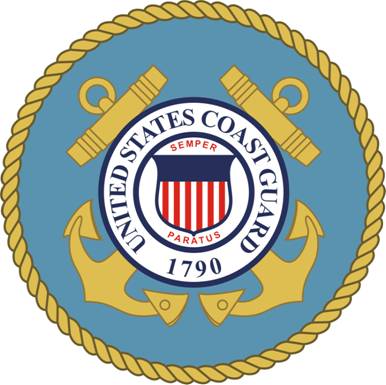

District Eleven Prevention (dp)
Private Aids
Approval for Private Aids to Navigation (PATON) is regulated by U.S. Coast Guard under Title 33 of the Code of Federal Regulations, Part 66 (33CFR66). For the Eleventh Coast Guard District, California, Nevada, Arizona, and Utah this responsibility lies with the Aids to Navigation Branch.
What is a Private Aid to Navigation?
A Private Aid to Navigation is a buoy, light or daybeacon owned and maintained by any individual or organization other than the United States Coast Guard. These interests include private citizens, marina and yacht clubs, municipal and state governments, construction and dredging companies, research and non- profit organizations, beach front associations, and large industrial companies. Private aids to navigation are designed to allow individuals or organizations to mark privately owned marine obstructions or other similar hazards to navigation, or to assist their own navigation operations. Private aids to navigation are required to be maintained by the owner as stated on the U.S. Coast Guard permit.
The term Private Aids to Navigation can be confusing in some instances. The confusion exists because much of what we permit is not really an aid to navigation, such as a mooring buoy or a string of swim area buoys: they do not aid navigation in any way, although they warn the mariner to keep away from them. The PATON permit process is still the method we use to evaluate the navigational safety of the object placed in the water, and to determine if it should be lighted and/ or placed on the chart.
Management of PATON
The Coast Guard generally leaves management of mooring buoys to state and local authorities. The local and not-so-local authorities can include the Army Corps of Engineers, the State Lands Commission, the local Coastal Commission, various conservation districts and the local Harbormaster. The Coast Guard gets involved when there is not a designated mooring area and a buoy may need to be placed on the chart, but only after local authorities have approved the placement. We are also involved in large commercial mooring buoys that need to be lighted and charted
Types of Private Aids
Temporary: Those aids that will be on station 6 months or less. An application is not required for a temporary aid, however, plans for any temporary aid should be submitted for review before it is established. The Coast Guard will publish the location of these temporary aids in the Local Notice to Mariners.
Permanent: Those aids that will be on station longer than 6 months and that require a completed and approved application.
Permitting and Applications
Private Aids on navigable waters regulated by the federal government require a Coast Guard permit. The application for a permit, form CG-2554, can be obtained by contacting the PATON Program Manager.
The PATON Program Manager provides applicants with assistance in processing their paperwork. Copies of federal regulations (33CFR66) governing aids to navigation and copies of previously issued permits are available. You may also obtain illustrations of standard markings used on navigable waters under the U.S. Aids to Navigation System. There is no longer a uniform state waterway marking system. Buoys and markers used inland and within state waters should be the same as the U.S. Aids to Navigation System. Contact or email the Program Manager to obtain an application or to submit any Temporary Private Aids to Navigation Plans for review prior to establishment of any temporary aid.
Download a Private Aids to Navigation Application (Form CG-2554) and Application Instructions.
Owners are reminded of their responsibility for the proper operation and maintenance of their private aids to navigation. When owners receive discrepancy reports from the Coast Guard, they are obligated to take immediate action to correct the discrepancy.
Mariners are reminded that they have a responsibility to report discrepant private aids to the nearest Coast Guard unit. All aids to navigation in the Eleventh Coast Guard District, both private and federally maintained, are user monitored. The failure of a mariner to report a discrepant aid to navigation may result in casualties to others. The Coast Guard issues broadcast notice to mariners for reported discrepancies which remain in effect until the discrepancy is corrected or is published in the Local Notice to Mariners.